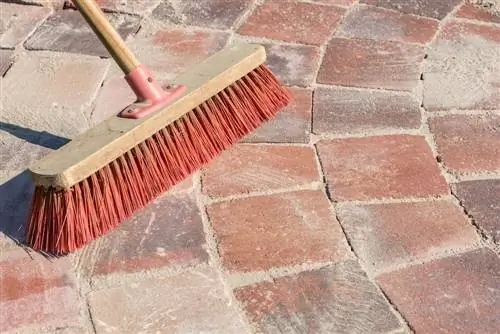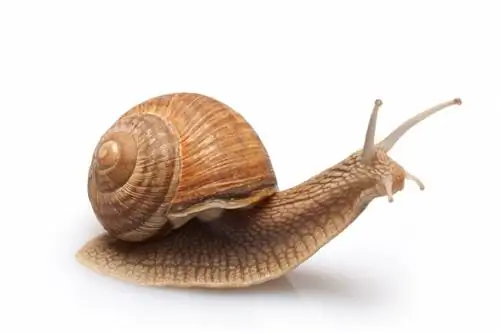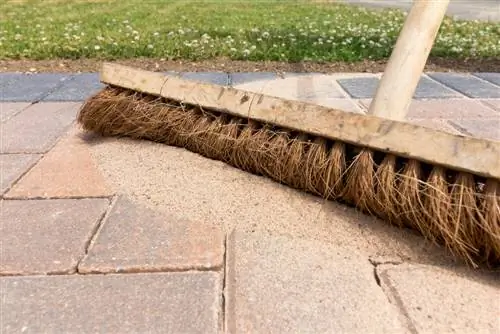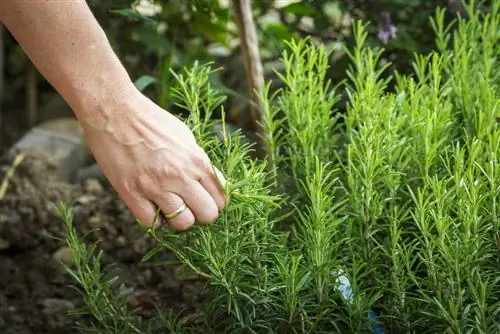- Author admin [email protected].
- Public 2023-12-16 16:46.
- Last modified 2025-01-23 11:22.
Do you want to prevent ant infestation between and under pavement? If you use joint sand against ants, the small crawling creatures will not undermine your garden path or patio paving so quickly.

How do I use joint sand against ants?
Use polymeric joint sand against ants. Before laying the paving, apply the material underneath it. Fill in joints. Then straighten the entire area with a vibrating plate so that the joint sand fills and closes smaller gaps.
Where is joint sand used against ants?
Joint sand is typically used underwalking slabsin the garden or onpatios. The material ensures a flat pavement surface and prevents ants from digging between the cracks of individual slabs or under the slabs. This type of undermining could cause slabs to become loose or uneven areas in the pavement to arise due to ant infestation. Ants on the terrace are also annoying because they can work their way into the house from this area if you don't use home remedies to combat ants.
Which joint sand works best against ants?
Especiallypolymeric joint sand is suitable. The material is permeable to water, very resistant to erosion and ecologically harmless. Once properly applied, it deters ants even more consistently than would be the case with quartz sand. Please note the following things when filling terrace joints and paving joints:
- Apply the joint sand to the surface below before laying the paving.
- Then lay the plaster completely.
- Treat this with a plate compactor.
Does joint sand only work against ants?
Joint sand also keeps paved surfaces weed-free. With professional application, you can to a certain extent prevent plants from regularly finding their way between the plates. The material is also popular because of this additional property. Not only will you avoid ant trails, but you will also have less work to do when maintaining the paved area in the future.
Tip
Adjust the grain size to the width of the joints
You can achieve the best possible effect by matching the grain size to the width of the joints. In the case of very narrow panel joints, use the smallest possible grain size of approximately 0.1 mm. Normally, however, a grain size of between 0.5 and 0.5 mm is sufficient when grouting.






